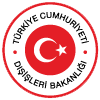News
[ad_1]
At least 30 gunmen killed a Kosovar Albanian police officer then stormed an Orthodox monastery in Kosovo near its border with Serbia, setting off ongoing gunbattles that have left three assailants dead and raised tensions between the two former wartime foes as they seek to normalize ties.
Police have surrounded Banjska, a village located 55 kilometers (35 miles) north of the Kosovo’s capital where the monastery is located, and the gunfire is continuing, according to Prime Minister Albin Kurti, who said the attack had support from neighboring Serbia.
For the latest headlines, follow our Google News channel online or via the app.
The Kosovo Diocese of the Serbian Orthodox Church said a temple of the monastery in Banjska was locked down after the gunmen stormed it. A group of pilgrims from Serbia was inside the temple along with an abbot.
Serbian President Aleksandar Vucic was expected to speak later Sunday to “expose Kurti’s lies,” according to pro-government media, apparently referring to Kurti’s statement that Serbia backed the attack. It was unclear if the gunmen were Serbs.
Serbia and its former province, Kosovo, have been at odds for decades.
Their 1998-99 war left more than 10,000 people dead, mostly Kosovo Albanians. Kosovo unilaterally declared independence in 2008 but Belgrade has refused to recognize the move.
Earlier this month, an EU-facilitated meeting in Brussels between Kurti and Vucic to normalize ties ended in acrimony. The United States has supported the negotiations and the EU’s position in trying to resolve the ongoing source of tension in the Balkans.
On Sunday, the Kosovo diocese said a group of masked men in an armored vehicle stormed the monastery, breaking down the locked gate and shooting guns.
“Armed, masked men move around the courtyard and occasional gunshots are heard,” it said.
Earlier on Sunday Prime Minister Kurti said “masked professionals armed with heavy weapons” launched the attack opened fire on a police patrol at about 3 a.m. (01:00 GMT) in Banjska near the monastery.
Three of the assailants were killed and one was arrested. Four ethnic Serbs were arrested in a nearby village with communication equipment. Other weapons and ammunition was found at a location apparently used by the assailants, according to Kosovar police.
One police officer has been killed and two others injured, the last during the armed confrontation, apparently near the monastery at the village, authorities said.
At a news conference Kurti displayed a set of photos which showed a number of four-wheel drive vehicles without license plates and an armored personnel carrier “which does not belong to the Kosovo police” near the monastery.
He described the armed assailants as “an organized professional unit who have come to fight in Kosovo,” calling on them to hand themselves over to Kosovar authorities.
Police said the situation remained tense while “gunfire attacks against police units continue with the same intensity from the moving criminal groupings.”
Kosovo police said the attack began when three police units were dispatched to a bridge at the entrance to the village that had been blocked by trucks. The police officers came under fire from weapons that included hand grenades and bombs and one was killed. The armed men then stormed the monastery.
Kurti called it a “sad day” for Kosovo, identifying the dead police officer as Afrim Bunjaku.
Local roads and two borders crossings into Serbia were closed. Most of Kosovo’s ethnic Serb minority lives in four municipalities around Mitrovica, in the north.
“It was a real little war: first some gunfire, then silence, shootings, detonations,” Serbian news agency Kossev quoted an unidentified resident as saying.
Kurti wrote on his Facebook page that “Organized crime, which is politically, financially and logistically supported from Belgrade, is attacking our state.”
The speaker of Serbia’s parliament, Vladimir Orlic, responded that Kurti “was quick to blame the Serbs” but actually was the one who wanted an “escalation.”
“He (Kurti) said it was some kind of organized action by professionals,” Orlic told Serbian TV station Prva. “They must have been identified and he knows who they are and what they are, and everything is clear.”
The European Union’s foreign policy chief, Josep Borrell, condemned “the hideous attack by an armed gang against Kosovo police officers” and said “all facts about the attack need to be established. The responsible perpetrators must face justice.”
He added that the EU’s rule of law mission, or EULEX, had representatives on the ground and in close contact with authorities and the NATO-led international peacekeeping force in Kosovo.
Borrell talked on phone both with Kurti and Vucic reiterating “his call for the assailants to surrender immediately and the release of the pilgrims at Banjska Monastery, for them to leave safely.”
International police officers from the EU mission and a limited number of Kosovo police have been responsible for enforcing the rule of law in northern Kosovo. Serbia has vehemently protested the presence of the Kosovo Police.
In February, the EU put forward a 10-point plan to end the latest round of heightened tensions between Serbia and Kosovo. Kurti and Vucic gave their approval at the time, but with some reservations that have still not been resolved.
The EU warned both countries that the commitments the leaders made in February “are binding on them and play a role in the European path of the parties” – in other words, Serbia and Kosovo’s chances of joining the 27-nation bloc.
The Kosovo-Serbia border is guarded by peacekeepers from the 4,000-strong NATO-led KFOR force, which has been in Kosovo since 1999. In May, tensions in northern Kosovo left 93 peacekeepers hurt in riots.
Read more:
Examining Kosovo-Serbia ethnic tensions 15 years after Kosovo’s independence
Police officer killed in attack in north Kosovo
Kosovo situation ‘highly volatile’: NATO commander
[ad_2]
Source link





